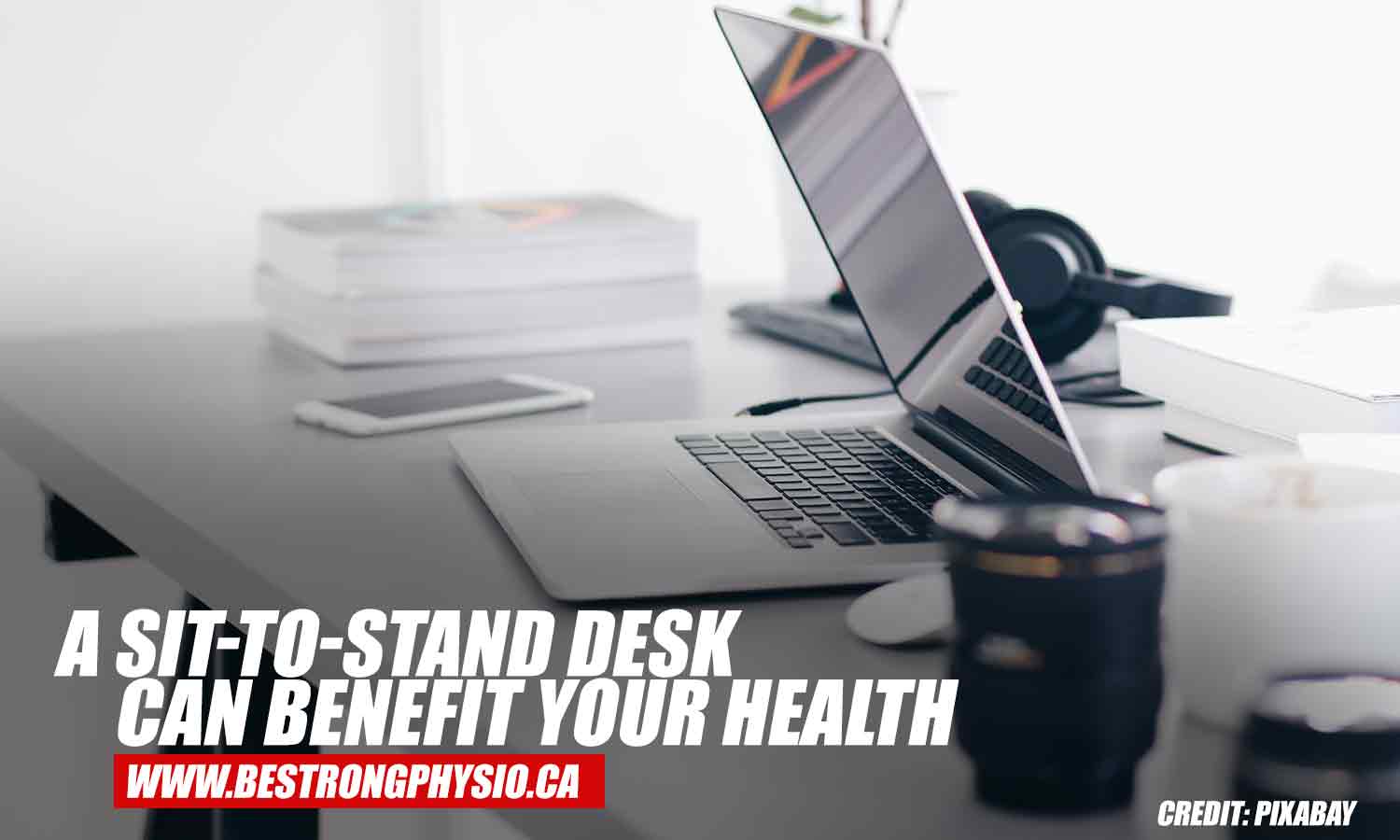The Benefits of Using a Sit-to-Stand Desk
Wondering what all the hype around sitting-to-standing desks is about? Desks that allow both sitting and standing have been around for decades. Today, they’re more popular than ever because of their benefits. These benefits not only apply to your health but the quality of work you’re able to produce. More and more offices are seeing the benefits of giving their workers the choice to sit or stand. As workplaces convert to sit-to-stand desks, home offices also need an upgrade. If you suffer from back pain, see a chiropractor in Toronto and assess your workstation. Whether you work in an office or from your desk at home, you can reap the benefits of using a sit-to-stand desk.
The Problems with Sitting
You may be thinking, “What’s wrong with sitting? As long as my seated desk is set up ergonomically, it’s okay, right?”
Unfortunately, current research is showing how detrimental sitting for eight hours a day can be. Sedentary workstations put employees at risk of developing adverse health conditions. They decrease your energy levels and result in less productive time. Staying in the same seated position for eight hours a day can cause chronic pain. Repetitive movement strains can also occur if you don’t change your position. However, standing the whole time is as detrimental as sitting all day. Ideally, you want a blend of sitting and standing during your workday.

What is a Sit-to-Stand Desk?
There are seated desks, and there are standing desks. What makes the sit-to-stand desk unique is its height adjustability. The height can change to suit your working needs. This feature is awesome for offices to provide ergonomic workstations. A 6” employee sits taller than a 5” one. Being able to adjust the height allows the individual to customize the desk to their preference, whether they’re sitting or standing.
The sit-to-stand desk has plenty of perks. Here are the most notable benefits of using a sit-to-stand desk.
-
-
You Burn More Calories
-
If you’re trying to lose weight and get healthy, being sedentary isn’t the best option. Sitting doesn’t burn enough calories to lose weight, and it can cause you to lose muscle strength. Standing is a low-impact movement that, surprisingly, burns calories efficiently. It uses more muscles than sitting and promotes flexibility and agility. You burn 30% more calories when standing than sitting. Frequently changing from seated to standing during the workday increases the number of enzymes your body produces to metabolize food. If you want to burn calories, lose weight, and get healthy, take advantage of a sit-to-stand desk.
-
-
You Improve Your Posture
-

-
-
Adjustable Desks Promote Movement
-
The motion of switching from seated to standing is a huge benefit of these desks. The minuscule movements of your muscles when you stand up are enough to keep joints flexible. Transitioning from sitting to standing requires balance, core strength, and proper posture. These three requirements contribute to stronger bones. Too much sitting can lead to loss of bone density. Simply reminding yourself to switch from seated to standing or standing to seated every hour is enough to reap the benefits.
-
-
Decreases Risk of Metabolic Syndrome
-
Metabolic syndrome is an umbrella term for conditions that can result in heart attack and stroke. These include developing diabetes, obesity, high blood sugar, high triglycerides, and low HDL cholesterol. Standing up helps you burn calories and maintain the biological systems that process blood. It balances your insulin levels as well as your cholesterol and triglycerides. By sitting all day at work, the systems you need to process your blood slow down. Thus, you can get a build up or dangerous levels of those substances. The physical exertion of sitting down and standing up is hugely beneficial for preventing heart attack and stroke.
-
-
Better Brain Function
-

We need healthy blood flow to the brain to deliver oxygen. Your bigger muscles in your legs and core engage when you stand up. This demands blood flow to circulate efficiently. You’ll notice an increase in energy, focus, and an upswing in your mood when you stand up. The oxygen entering the brain causes a release of mood-improving chemicals. Since standing up balances the amount of sugar and fats in your blood, you experience higher energy levels and a stronger focus. The next time you feel yourself falling asleep at your seated desk, stand up. Take a few steps and notice how much more alert you feel. When you’re alert, you can produce better quality work.
-
-
Reduces Chronic Pain
-
The number of injuries office workers can experience is lengthy. Sitting at a desk for eight hours a day is far too long to be in a seated position. Our bodies are different from other animals in that we are designed to stand on two legs. Not doing so causes stiff joints, damaged nerves, and body pain. On top of that, the motions you’re doing are often repetitive, like typing and answering the phone. If you’re starting to feel pain at work, start moving your body. A sit-to-standing desk lets you change your body position without falling behind on your duties.
If you already suffer from chronic pain from work, a sit-to-standing desk can help alleviate it. You might feel pain in your upper back and neck from your posture when sitting. A simple switch to standing can relieve the pain in your back and neck. Always be aware of ergonomics whether you’re sitting or standing.
How to Set Up Your Sit-to-Stand Desk

The ergonomics of a standing desk are similar to those of a seated desk. To start, you want both of your feet planted on the ground at hips-width apart. When using your keyboard, your elbows should be bent at 90 degrees. This guides you on what height to adjust your desk to. Your posture at a standing desk should be straight and comfortable. Don’t exert your back muscles to stand taller. Avoid the curving in of your shoulders that diminishes your posture. Use a monitor or laptop stand to keep your screen at eye level.
When you go from sitting to standing, there are a few adjustments you might need to make. You might need to lower your monitor screen and adjust the height for your elbows. Luckily, they don’t take long and are well worth the benefits of using a sit-to-stand desk.





